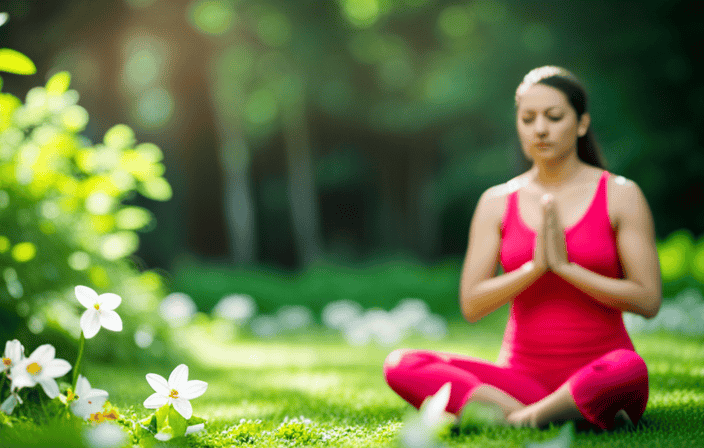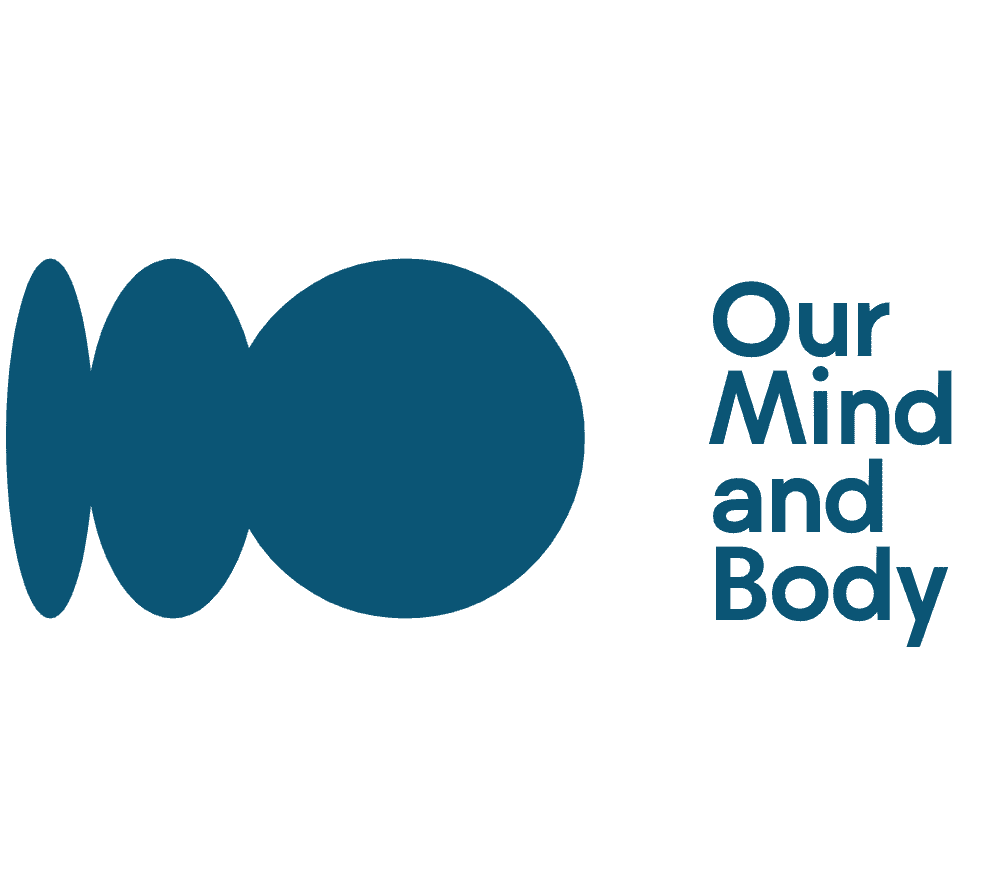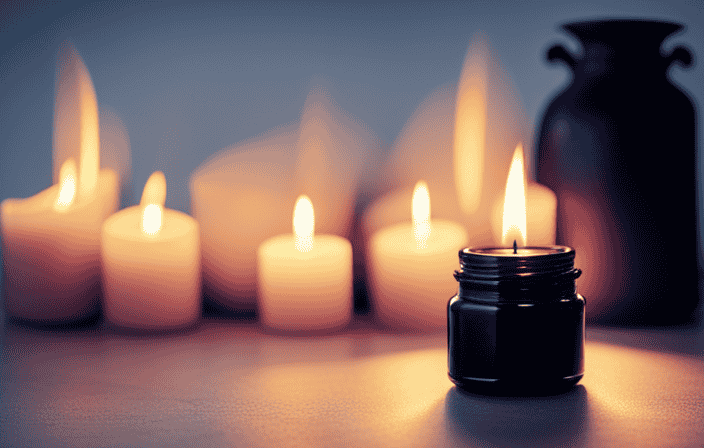Inspiration
Prepared – How This Power Word Can Make You Better

Have you ever found yourself unprepared, wishing you had planned more thoroughly? It could be a sudden presentation at work, an unexpected financial challenge, or a natural disaster. Life often presents us with situations full of unexpected events and doubt, but being ready can make a big difference in the end.
I remember the time when my friend’s house caught on fire. While everyone around her panicked, she calmly pulled out her emergency kit and directed us on what to do. Thanks to her preparedness, we were able to escape safely and with minimal damage.
This experience made me realize the importance of being prepared for any situation that may come my way. In this article, we’ll explore how embracing this power word ‘prepared’ can make us better in every aspect of our lives.
Key Takeaways
- Being prepared is a proactive and adaptable approach to life that involves foresight and taking action ahead of time.
- Practical strategies for becoming more prepared include having emergency supplies and practicing emergency scenarios, as well as developing a prepared mindset through mental preparation and overcoming obstacles.
- Personal preparedness is important for emergencies, including natural disasters and financial emergencies, and can be achieved through creating emergency kits and plans, building an emergency fund, and seeking professional advice for financial management.
- Embracing preparedness in all areas of life, including the workplace and relationships, can lead to greater success and happiness by allowing individuals to approach any situation with confidence and ease.
Understanding the Meaning of Preparedness
Understanding the meaning of preparedness isn’t just about having a plan, it’s about being ready to adapt to any situation. It involves understanding the importance of being proactive and taking steps ahead of time to ensure that you’re always ready for whatever comes your way.
Preparation plays a key role in goal setting by giving us the tools we need to achieve our objectives and overcome obstacles. Being prepared means having the foresight to anticipate potential problems and taking action before they arise.
This can involve everything from creating a backup plan to investing in additional resources or training. By preparing ourselves for different scenarios, we become more resilient and better equipped to handle unexpected challenges.
Ultimately, being prepared is about taking control of our lives and ensuring that we’re always moving forward towards our goals. Rather than waiting for things to happen, we take an active role in shaping our futures and building the skills and knowledge necessary for success.
And when we do encounter obstacles along the way, we have the confidence and resilience needed to overcome them and keep pushing towards our dreams. Understanding these benefits is key if you wanna become truly prepared for anything that life throws your way.
The Benefits of Being Prepared
I’ve found that being prepared has helped me in a number of ways.
For one, it’s improved my time management skills immensely. By having everything I need at the ready, I’m able to tackle tasks more efficiently and effectively.
Additionally, being prepared has increased my confidence levels, as I know that whatever challenges come my way, I have the tools and resources necessary to handle them.
Finally, it’s also led to better decision-making on my part–when you’re prepared for any outcome, you’re better able to make informed choices that’ll benefit you in the long run.
Improved Time Management
With improved time management, you’ll find yourself effortlessly juggling tasks and completing them in record time. One effective way to manage your time is through time blocking. This technique involves allocating specific blocks of time for each task on your to-do list. By doing this, you can focus on one task at a time without getting distracted by other responsibilities.
Another useful technique for prioritizing tasks is creating a daily or weekly schedule using prioritization techniques. This helps you identify which tasks are urgent and important so that you can allocate more time and effort into completing them first.
With better organization of your schedule, you’ll be able to finish all your work in less time and avoid the stress of last-minute deadlines. And with increased productivity comes an added benefit – confidence!
Increased Confidence
By improving your time management skills, you’ll feel more confident in your ability to tackle tasks and meet deadlines. This increase in confidence can have a ripple effect on other areas of your life, boosting self-esteem and helping you overcome fear with preparedness.
Here are five ways that improved time management can contribute to increased confidence:
- You’ll have a clear plan for completing tasks and meeting deadlines.
- You’ll be able to prioritize effectively, ensuring that the most important tasks are tackled first.
- You’ll be less likely to procrastinate or get sidetracked by distractions.
- You’ll have more free time to pursue hobbies or interests outside of work/school responsibilities, which can boost overall happiness and well-being.
- You’ll be better equipped to handle unexpected challenges or setbacks, as you will already have a solid foundation in place.
By increasing your confidence through improved time management, you’ll also be setting yourself up for better decision-making.
Better Decision Making
When improving your time management skills, you’ll find yourself making better decisions effortlessly. Maximizing preparedness is the key to better decision making. When we’re not prepared, we tend to suffer from decision paralysis, where we struggle to make a choice due to the overwhelming number of options available.
To overcome this, I rely on a simple table that I fill out whenever I need to make an important decision. The table has three columns: Pros, Cons, and Risks. In the Pros column, I list all the positive outcomes of each option. In the Cons column, I list all the negative outcomes of each option. And in the Risks column, I list all the potential risks associated with each option. By breaking down my options into these categories and filling out this table before making a decision, it becomes easier for me to weigh my options and choose what’s best for me in any given situation.
With this approach to decision-making, becoming more prepared doesn’t have to be difficult or time-consuming. In fact, it can be as simple as creating a table like this one before making any major decision in your life. By doing so, you’ll be able to overcome decision paralysis and make choices with confidence knowing that you’ve taken all factors into consideration.
Now let’s move onto practical strategies for becoming more prepared without feeling overwhelmed or stressed out about it!
Practical Strategies for Becoming More Prepared
You absolutely must have a plan in place if you want to be prepared for any situation that may arise. Being prepared is not just about having the right tools and resources, it’s also about having a clear idea of what to do when things go wrong.
Here are some practical strategies for becoming more prepared:
- Make sure your home is equipped with emergency supplies, such as first aid kits, flashlights, and non-perishable food items.
- Always carry a portable charger and extra battery pack when traveling so you can stay connected in case of an emergency.
- Keep important documents (like passports or insurance papers) in a waterproof container or bag.
- Practice different emergency scenarios with your family or travel companions so everyone knows what to do if something unexpected happens.
By implementing these simple steps, you’ll be better equipped to handle whatever comes your way.
Preparedness at home and while traveling can make all the difference in ensuring your safety and well-being. But being prepared isn’t just about having the right supplies – it’s also about developing a mindset that allows you to think quickly and adapt to changing circumstances.
As you work on developing this mindset, remember that being prepared isn’t just about being ready for the worst-case scenario. It’s also about taking small steps every day to minimize risks and increase your chances of success.
In the next section, we’ll explore some additional strategies for cultivating a prepared mindset that will serve you well in all areas of life.
Developing a Prepared Mindset
As we discussed in the previous subtopic, developing a prepared mindset requires practical strategies that can be developed over time. However, it’s not just about having a checklist of things to do. Developing a prepared mindset is crucial to becoming better at anticipating and handling unexpected situations.
One way I’ve found helpful in developing habits for preparedness is overcoming obstacles. It’s easy to get discouraged when things don’t go as planned, but that’s precisely the time when we need to push ourselves harder. For example, instead of giving up on exercising because of bad weather, finding alternative ways like indoor workouts or yoga can help us stay physically ready.
Mental preparation is equally important as physical readiness. Visualizing potential scenarios and mentally rehearsing how we would respond can help us feel more confident and less anxious when faced with challenging situations. By cultivating these habits consistently, we can gradually develop a mindset where being prepared becomes second nature and ultimately leads to better outcomes in all areas of life.
Speaking of which…
Moving onto the next section about applying preparedness in the workplace, it’s crucial to recognize that what we do outside work affects our performance inside work as well. By incorporating these habits into our daily routine, we’ll be better equipped to handle any curveballs thrown our way while also setting an example for those around us on how they too can become more prepared individuals.
Applying Preparedness in the Workplace
To effectively apply preparedness in the workplace, it’s essential to integrate habits and strategies that help you anticipate and handle unexpected situations. Here are some ways I’ve found helpful:
- Stay organized: Keep your work area tidy and maintain a schedule to ensure you have enough time for each task.
- Learn from past experiences: Reflect on past challenges or mistakes to develop better solutions for future scenarios.
- Build relationships with colleagues: Having a network of trusted colleagues can provide extra support during stressful situations.
- Practice active listening: Pay attention to verbal cues and body language from coworkers to better understand their needs in a given situation.
Preparedness in the workplace is crucial because it helps minimize risk and ensures business continuity. However, overcoming barriers like lack of resources or resistance to change can be challenging. To address these issues, companies can implement training programs or appoint an emergency response team. As individuals, we can also take steps like staying informed about company policies and procedures, regularly assessing potential risks, and communicating concerns with management.
In the next section about preparing for personal emergencies, I’ll discuss how we can extend our mindset of preparedness beyond the workplace into our personal lives. By taking similar proactive measures as we do at work, we can increase our resilience in all aspects of life.
Preparing for Personal Emergencies
Transition from Previous Subtopic:
As important as it’s to be prepared for emergencies in the workplace, being ready for personal emergencies is equally crucial. In fact, considering that most of our time is spent outside work, it’s easy to see why having a plan in place for unexpected events that can occur at home or while on the go is essential.
Current Subtopic:
When it comes to preparing for personal emergencies that require immediate action, such as natural disasters or accidents, having an emergency kit and a family plan in place can make all the difference.
Some emergency kit essentials include first aid supplies, non-perishable food items, bottled water, flashlights with extra batteries and blankets. Ensuring that these items are readily available can help you stay safe and comfortable during an emergency situation.
Another important aspect of personal preparedness is creating a family emergency plan. This should include identifying safe locations within your home or community where you can take shelter during an emergency. It should also involve discussing evacuation routes and communication plans with family members so everyone knows what to do if separated during a crisis.
Transition to Next Subtopic:
Taking steps towards personal preparedness not only reduces stress during times of crisis but also improves overall resilience. However, sometimes even the most well-prepared individuals face situations beyond their control – like natural disasters – which we’ll discuss next.
Preparing for Natural Disasters
When preparing for natural disasters, it’s important to have a well-stocked emergency kit and a family plan. Emergency kits should contain non-perishable food, water, first aid supplies, flashlights with extra batteries, and any necessary medication.
It’s also important to have a way to communicate with loved ones in case of separation or loss of phone service. Make sure everyone in the household knows where the emergency kit is stored and how to use it.
Evacuation plans are another crucial aspect of preparing for natural disasters. Identify safe places to go if you need to leave your home quickly, such as shelters or friends’ homes outside the affected area. If possible, practice evacuation routes so everyone knows what to do in an emergency situation.
Don’t forget about pets – make arrangements ahead of time for their care during an evacuation. Natural disasters can happen at any time, and being prepared can help save lives and reduce stress during a crisis.
In addition to preparing for personal emergencies like natural disasters, it’s important to also prepare for financial emergencies such as unexpected job loss or medical bills. By having an emergency savings fund and budgeting wisely, you can lessen the impact of a sudden financial setback on your life and wellbeing.
Preparing for Financial Emergencies
When it comes to preparing for financial emergencies, I believe there are three key points to consider.
The first is building an emergency fund, which can provide a safety net in case unexpected expenses arise.
Second, creating a budget can help you manage your finances and ensure that you’re living within your means.
Finally, seeking professional advice from a financial advisor or planner can be incredibly helpful in developing a long-term strategy for managing your money and preparing for potential emergencies.
Building an Emergency Fund
To truly prepare for the unexpected, I believe that building an emergency fund is important. Life can throw curveballs at any time and having a financial cushion to fall back on can make all the difference.
It’s like planting a seed that will bloom into security and peace of mind when you need it the most.
There are various strategies for building an emergency fund, such as setting aside a portion of each paycheck or cutting down on unnecessary expenses. The key is to make it a priority and consistently contribute to it over time.
With dedication and patience, you can gradually build up your emergency fund and be ready for whatever life throws your way.
Moving forward, creating a budget can also help in achieving financial stability without compromising your savings plan.
Creating a Budget
Start taking control of your finances by creating a budget that works for you. Here are some budgeting tips that can help you get started:
-
Determine your income: Start by figuring out how much money you have coming in each month.
-
Track your expenses: Keep track of everything you spend, from rent to coffee to groceries. This will help you see where your money is going and identify areas where you can cut back.
-
Set financial goals: Decide what you want to achieve with your money and create a plan to make it happen.
-
Stick to the plan: Once you’ve created a budget, stick to it as closely as possible.
It’s important to track expenses because knowing where your money is going is the first step in taking control of your finances. By creating a budget and sticking to it, you’ll be able to save more money and work towards achieving your financial goals.
However, if you’re still struggling with managing your finances or need more guidance, seeking professional advice may be beneficial for you.
Seeking Professional Advice
If you’re feeling overwhelmed with managing your finances, it may be helpful to seek professional advice from a financial advisor or planner. Although it can be tempting to try and handle everything on your own, seeking professional help can provide numerous benefits. A financial advisor can offer personalized guidance based on your specific situation and goals, help you create a comprehensive financial plan, and offer ongoing support as you navigate different life stages.
However, many people may feel reluctant to seek professional advice due to concerns about the cost or feeling embarrassed about their financial situation. It’s important to remember that seeking help is not a sign of weakness but rather a proactive step towards improving your financial health. By overcoming this reluctance and seeking out professional guidance, you can gain valuable insights into how to manage your money more effectively and reach your long-term financial goals.
Transitioning into the next section: Taking steps towards improving our finances is just one aspect of being prepared for the future. Another area where preparedness is crucial is in our relationships.
The Power of Preparedness in Relationships
When you’re in a relationship, being prepared for the unexpected can make all the difference. This is true whether you’re talking about friendships or romantic relationships.
When you take the time to think ahead and anticipate potential issues, you can be more proactive in addressing them before they become bigger problems. One of the keys to preparedness in relationships is communication. It’s important to be open and honest with your partner or friend about your thoughts, feelings, and concerns.
By doing so, you give them the opportunity to understand where you’re coming from and work together with you on finding solutions. Another way to prepare for success in relationships is by setting boundaries and expectations early on.
This can help prevent misunderstandings down the road and ensure that both parties are on the same page. By taking these steps, you’ll be better equipped to handle any challenges that may arise along the way.
In conclusion, embracing the power of preparedness can lead to stronger relationships across all areas of life. Whether it’s taking steps to communicate effectively or setting clear boundaries from the start, being proactive can help us navigate challenges with greater ease and grace.
So why not take a little time today to think about how you could be more prepared in your own relationships? You might be surprised at just how much of a difference it makes!
Conclusion: Embracing the Power of Preparedness
Congratulations! You’re now a master of relationship survival tactics. By embracing preparedness, you’ve learned that it’s not just about being ready for emergencies. It’s about adopting a mindset that allows you to approach any situation with confidence and ease.
Whether it’s having difficult conversations or navigating tricky social situations, your preparedness skills will help you tackle anything that comes your way. Embracing preparedness is the key to success in all areas of life.
When you have a plan in place and are equipped with the tools and knowledge needed to handle any situation, you’ll be able to achieve your goals more easily. Being prepared means taking charge of your life and being proactive rather than reactive.
It means anticipating challenges and taking steps to overcome them before they even arise. Preparedness isn’t just something you do during times of crisis; it’s a lifestyle choice that can lead to greater success and happiness overall.
By incorporating preparedness into your daily routine, whether it’s by setting aside time each week to plan ahead or by learning new skills and acquiring new knowledge, you’ll be better equipped to handle whatever life throws your way. So don’t wait until an emergency strikes – start embracing the power of preparedness today!
Frequently Asked Questions
How does being prepared impact mental health?
Being prepared has a significant impact on my mental health. When I’m prepared, I find that my focus improves because I’m not worrying about what needs to be done or what might go wrong. This helps me feel more confident and in control of my life.
Additionally, being prepared also reduces my stress levels because I know that I have everything under control and am ready for whatever comes my way. By taking the time to prepare in advance, whether it’s for a presentation at work or a family vacation, I can alleviate some of the stress that would otherwise weigh me down and negatively impact my mental health.
Can being over-prepared ever hinder success?
Balancing preparation and spontaneity is crucial for success. While being prepared can increase the chances of achieving a goal, becoming too reliant on preparation can hinder success. It’s important to recognize that not everything can be planned and unexpected situations may arise.
Over-preparing can lead to rigidity and inflexibility which could limit creativity and innovation. In my experience, finding a balance between preparation and spontaneity has allowed me to adapt to changing circumstances while still utilizing the benefits of being prepared.
It’s essential to remember that being prepared is helpful, but it shouldn’t be the only strategy used for success.
How can preparedness help with time management?
Effective planning and prioritization are key components of successful time management. By being prepared and proactive in problem-solving, I’m able to identify potential roadblocks before they become major issues and efficiently allocate my time accordingly.
This allows me to stay on track with my tasks and complete them in a timely manner. By taking a proactive approach, I’m able to minimize the amount of time spent on unexpected issues or tasks that could have been prevented through proper preparation.
Overall, being prepared helps me maximize my efficiency and productivity, allowing me to accomplish more in less time.
Is there a correlation between preparedness and financial success?
The correlation between preparedness and financial success isn’t a myth, but a truth that I’ve personally experienced. By being prepared with a budget and savings plan, I’m able to make informed decisions about my personal finances. This level of preparedness has allowed me to avoid impulsive purchases and prioritize long-term financial goals.
Additionally, being prepared for unexpected expenses through an emergency fund has provided peace of mind and prevented financial stress. Ultimately, preparedness in personal finance leads to improved decision-making and sets the foundation for long-term financial success.
Can preparedness be taught or is it an innate trait?
In my opinion, preparedness can be both taught and an innate trait.
Some people may naturally have a tendency to plan ahead and anticipate potential obstacles, while others may need to learn these skills through experience or guidance from others.
However, even those who are naturally inclined towards preparedness can benefit from further education and training in order to enhance their abilities.
Ultimately, the ability to be prepared is a valuable skill that can greatly improve one’s success in various aspects of life, including financial success.
Conclusion
In conclusion, embracing the power of preparedness can truly make a difference in all aspects of our lives. Being prepared not only helps us handle unexpected situations with ease, but it also gives us a sense of control and confidence.
As the saying goes, "an ounce of prevention is worth a pound of cure." By taking practical steps to become more prepared, such as creating emergency plans for natural disasters or financial emergencies, we’re setting ourselves up for success. And by developing a prepared mindset and applying it in our workplaces and relationships, we can achieve even greater outcomes.
So let’s embrace being "prepared" – it’s not just a word, but a powerful tool that can help us navigate through life’s challenges with ease.
As we take action towards becoming more prepared, we’ll see positive changes in our lives that’ll bring us peace of mind and security.
Meet Kiran, the guiding light of wisdom behind the empowering content at OurMindAndBody.com. As a talented and compassionate writer, Kiran weaves words with grace and insight, sharing profound knowledge and practical advice to inspire positive transformations in the lives of readers.
With a background in psychology and a deep-rooted passion for well-being, Kiran brings a unique blend of expertise and empathy to her writing. Her journey into the realm of mindfulness, meditation, and yoga began as a personal quest for self-discovery and healing. Having experienced the profound benefits of these practices firsthand, Kiran is committed to empowering others to embark on their own journeys of self-exploration and growth.
Inspiration
Unveiling The Depths Of Spiritual Warfare

Spiritual warfare is a complex battle with various challenges and strategies at different levels. Essentially, this battle is against evil forces led by Satan, whose aim is to shake our faith and hinder our relationship with God.
In this article, we will delve into the depths of spiritual warfare, exploring the various levels of attack, strategies to overcome the devil, and effective ways to fight against spiritual attacks.
By understanding the nature of this battle and equipping ourselves with the right tools, we can navigate this spiritual warfare and align ourselves with God’s will.
Key Takeaways
- Spiritual warfare involves battling against Satan’s forces and can consume individuals who are not properly aligned with God’s purposes.
- There are three levels of spiritual warfare: flesh, devil, and worldly powers, with the highest level being level 3.
- The devil seeks to deceive, tempt, and destroy, but believers can overcome him through prayer, fasting, scripture reading, and maintaining a personal relationship with God.
- Effective strategies to combat the devil and engage in spiritual warfare include establishing a relationship with God through communication and obedience, engaging in activities that please God, and surrounding oneself with positive influences such as uplifting music and spiritual fellowship.
Levels of Spiritual Warfare
I think it’s important to understand the levels of spiritual warfare in order to effectively combat these battles. By recognizing spiritual attacks, we can better equip ourselves to fight back.
The levels of spiritual warfare include the flesh, devil, and worldly powers. The flesh level involves tangible battles that we face in our physical bodies and circumstances. The devil level focuses on the external enemy, Satan, who seeks to deceive and destroy. Lastly, the worldly powers level encompasses attacks on our faith and belief systems by societal influences.
Spiritual armor plays a crucial role in defending against these attacks. To combat these battles, we must arm ourselves with prayer, faith, and the word of God.
By staying vigilant and aware of the different levels of spiritual warfare, we can effectively overcome and align ourselves with God’s will.
Strategies Against the Devil
Establishing a personal relationship with God through communication and obedience can be a powerful strategy to overcome the devil’s temptations and deceptions.
In the midst of spiritual warfare, it is crucial to equip ourselves with spiritual armor to withstand the attacks of the devil.
Prayer, in particular, is a potent weapon that allows us to communicate with God and seek His guidance and strength.
Through prayer, we can overcome the devil’s attempts to deceive and tempt us, as we draw closer to God and align ourselves with His will.
Prayer not only strengthens our relationship with God but also empowers us to resist the devil’s influence.
By regularly engaging in open and honest communication with God, we can equip ourselves with the spiritual armor necessary to overcome the devil’s attacks and stand firm in our faith.
Overcoming Spiritual Attacks
To overcome spiritual attacks, it is important to recognize the signs and seek guidance and strength from God.
Spiritual warfare can manifest in various ways, including behavior changes and unexplained physical symptoms. By being aware of these signs, we can identify when we are under attack and take appropriate action.
Defending against spiritual attacks involves establishing a strong relationship with God through prayer, fasting, and studying the Bible. These practices help us to stay connected to God’s power and truth, enabling us to resist the enemy’s influence.
Additionally, surrounding ourselves with positive influences such as uplifting music and spiritual fellowship can provide protection and support.
It is crucial to remember that spiritual attacks are not limited to believers; non-believers can also be targeted. By recognizing spiritual warfare and actively defending against it, we can overcome evil and align ourselves with God’s will.
Frequently Asked Questions
How can I differentiate between a spiritual attack and a normal life struggle?
Understanding spiritual discernment is crucial in differentiating between a spiritual attack and a normal life struggle. Recognizing signs of spiritual attacks, such as sudden behavior changes or unexplained physical symptoms, can help discern the source of the struggle.
Can spiritual warfare affect my physical health?
Yes, spiritual warfare can have a mental and emotional impact which can in turn affect physical health. However, through engaging in spiritual warfare, healing can occur on all levels, including physical well-being.
Is it possible to unknowingly invite spiritual attacks into my life?
Yes, it is possible to unknowingly invite spiritual attacks into my life. Recognizing spiritual attacks involves being aware of signs such as behavior changes and unexplained physical symptoms. It is important to protect oneself through prayer and positive influences.
Are there specific prayers or rituals that can protect me from spiritual attacks?
Prayer techniques and spiritual cleansing practices can provide protection from spiritual attacks. By seeking God’s guidance, regularly praying, and engaging in rituals such as smudging or anointing, I can create a spiritual shield against negative forces.
Can spiritual warfare affect my relationships with other people?
Spiritual warfare can impact my relationships by affecting my emotional well-being. Forgiveness plays a crucial role, as it allows for healing and restoration. It is important to address the spiritual battles within ourselves to maintain healthy connections with others.
Conclusion
In conclusion, spiritual warfare is a complex battle that occurs on multiple levels. It involves attacks on faith and belief systems, with the ultimate goal of undermining humanity’s relationship with God. This battle includes the flesh, the devil, and worldly powers.
However, individuals can overcome the devil’s tactics by establishing a personal relationship with God and engaging in spiritual practices. These practices include prayer, fasting, and studying the Bible.
Some may argue that spiritual warfare is subjective and lacks tangible evidence. However, it is important to remember that the battle against evil is not always visible. Its effects can be felt through behavior changes and unexplained physical symptoms.
To effectively fight against spiritual attacks, individuals must actively seek God’s guidance and surround themselves with positive influences. By doing so, they can align themselves with God’s will and overcome the challenges of spiritual warfare.
Meet Kalinda, the passionate and visionary Editor-in-Chief of OurMindAndBody.com. Kalinda is a beacon of light in the realm of holistic well-being, and her mission is to positively impact the lives of others by inspiring them to embrace a healthier and more fulfilling lifestyle.
With a deep-rooted love for meditation, yoga, and spirituality, Kalinda’s journey toward self-discovery and personal growth started at a young age. She found solace and strength in these practices, which not only helped her cope with the challenges of life but also provided her with a profound sense of purpose. Eager to share the transformative power of these ancient disciplines, Kalinda embarked on a path to spread awareness and understanding.
Inspiration
The Mighty Gamabunta: Jiraiya’s Spiritual Beast

In the Naruto series, Gamabunta is known as Jiraiya’s legendary mystical creature and spiritual companion, showing impressive strength. With his ability to change shape, summon smaller toads, and utilize natural energy, Gamabunta proves to be a valuable ally to Jiraiya.
Together, they form an unstoppable team, communicating telepathically and coordinating their attacks in battle.
In this article, we will delve into the description, abilities, various names, and the first appearance of the mighty Gamabunta, shedding light on his significance in the Naruto universe.
Key Takeaways
- Gamabunta is Jiraiya’s mystical animal companion, a giant toad from Mount Myoboku.
- Gamabunta provides strategic support in combat, including transportation and close-range combat.
- Gamabunta has unique abilities such as shape-shifting, summoning smaller toads, and absorbing natural energy.
- The most commonly accepted name for Jiraiya’s spiritual beast is Gamabunta.
Description and Abilities
Gamabunta, Jiraiya’s spiritual beast, is a giant toad with incredible abilities. These abilities include shape-shifting, summoning smaller toads, and absorbing natural energy. Gamabunta plays a crucial role in Jiraiya’s training and development as a shinobi.
With Gamabunta’s strategic support and formidable combat skills, Jiraiya is able to enhance his combat capabilities and transportation. The strong bond between Jiraiya and Gamabunta is evident in their telepathic communication, which increases coordination and effectiveness in battle.
Furthermore, Gamabunta’s significance extends beyond Jiraiya to Naruto. As a summoning animal for both Jiraiya and Naruto, Gamabunta has a profound impact on their growth as shinobi. Through their encounters and battles together, Gamabunta provides guidance and support to Naruto, helping him develop his skills and overcome challenges.
This relationship between Naruto and Gamabunta showcases the importance of mentorship and the influence of spiritual beasts in the Naruto universe.
Various Names
Toad Boss, also known as the Great Toad Sage, is a prominent character in the Naruto series and serves as my loyal companion throughout my journeys.
Gamabunta holds great cultural significance in Japanese folklore, as it is based on the mythical creature known as the toad.
In the Naruto universe, Gamabunta plays a crucial role in shaping my character development. As a summoning animal, Gamabunta’s immense power and wisdom have guided me through countless battles and taught me important life lessons.
Our telepathic communication enhances our coordination, allowing us to strategize effectively in combat.
Gamabunta’s presence also showcases my growth and maturity as a ninja, as I gain the respect and trust of such a formidable and revered beast.
Together, we have faced many challenges, and our bond continues to strengthen as we overcome obstacles and protect the ninja world.
Summoning and First Appearance
Summoning my loyal companion was a pivotal moment in my battle against Orochimaru. An incredible force emerged to aid me – the Summoning Technique, a jutsu I had mastered. It allowed me to summon Gamabunta, the mighty toad, to the battlefield.
As he appeared in a swirl of smoke, Gamabunta’s massive size and power commanded attention. His first appearance showcased his formidable abilities. He unleashed a devastating Giant Toad Body Slam, crushing our enemies with his sheer strength.
With Gamabunta by my side, I felt invincible. His impressive water-style jutsu and unrivaled combat skills were at my disposal. The significance of Gamabunta’s first appearance in Naruto cannot be understated. It marked the beginning of a partnership that would prove crucial in numerous battles to come.
Frequently Asked Questions
How did Jiraiya first form a bond with Gamabunta?
Jiraiya formed a bond with Gamabunta through the Summoning Technique, where he summoned the giant toad to aid him in battle. Their bond is significant as Gamabunta provides strategic support and can understand human language, allowing for better coordination with other summoning animals.
Can Gamabunta communicate with other animals besides Jiraiya?
No, Gamabunta cannot communicate with other animals besides Jiraiya. His ability to communicate only extends to telepathic communication with Jiraiya, which enhances their coordination in battle but does not involve other animals.
What is the origin of Gamabunta’s name?
The name Gamabunta holds significant meaning in Japanese folklore. It symbolizes the connection between Jiraiya’s ninja techniques and the wisdom of the toad sage. Gamabunta also acts as a mentor and protector for Jiraiya, guiding him in his early days as a ninja.
Are there any other summoning animals that Jiraiya can call upon besides Gamabunta and Gamakichi?
No, there are no other summoning animals that Jiraiya can call upon besides Gamabunta and Gamakichi. Jiraiya’s summoning technique is unique and powerful, placing him among the top summoners in the Naruto series.
Has Gamabunta ever been defeated in battle?
In the world of Naruto, Gamabunta is a force to be reckoned with. Compared to other summoning animals, he is incredibly powerful. However, he does have his weaknesses. While he can defeat many spiritual beasts in battle, he is primarily limited to fighting alongside Jiraiya.
Conclusion
In conclusion, Gamabunta is a formidable and powerful ally to Jiraiya in the Naruto series. With his shape-shifting abilities, summoning smaller toads, and absorbing natural energy, Gamabunta proves to be a formidable force in combat.
His telepathic communication with Jiraiya enhances their coordination and makes them a nearly invincible duo. Known by various names such as Toad Boss and Great Toad Sage, Gamabunta is considered one of the strongest summoning animals in the Naruto universe.
An interesting statistic to note is that Gamabunta made his first appearance during the battle against Orochimaru using the Summoning Technique, showcasing his significance in Jiraiya’s journey.
Meet Kalinda, the passionate and visionary Editor-in-Chief of OurMindAndBody.com. Kalinda is a beacon of light in the realm of holistic well-being, and her mission is to positively impact the lives of others by inspiring them to embrace a healthier and more fulfilling lifestyle.
With a deep-rooted love for meditation, yoga, and spirituality, Kalinda’s journey toward self-discovery and personal growth started at a young age. She found solace and strength in these practices, which not only helped her cope with the challenges of life but also provided her with a profound sense of purpose. Eager to share the transformative power of these ancient disciplines, Kalinda embarked on a path to spread awareness and understanding.
Inspiration
Unveiling Pastor Jerry Eze’s Spiritual Father: A Catalyst For Growth

In the realm of spiritual growth and progress, the revelation of Pastor Jerry Eze’s mentor marks a pivotal moment in his journey.
This divine connection with Pastor Enoch Adeboye, a respected and revered figure, has become a cornerstone of Pastor Eze’s development.
Their relationship is a testament to the power of seeking guidance, honor, and mentorship in ministry.
As we delve into their profound bond, we will witness the transformative impact that a spiritual father can have on one’s ministry, vision, and spiritual walk.
Key Takeaways
- Pastor Jerry Eze’s spiritual father has had a cordial and healthy relationship with him, providing mutual respect and guidance that has influenced Pastor Jerry Eze’s ministry.
- Seeking guidance and mentorship in ministry is essential, as demonstrated by Pastor Jerry Eze’s own example, and can have a positive impact on one’s spiritual journey and ministry.
- Pastor Jerry Eze has multiple spiritual mentors in addition to his primary spiritual father, which is a common practice among ministers, and these mentors provide different perspectives and insights that enrich his spiritual journey.
- Pastor Jerry Eze’s spiritual father has had a significant positive impact on his ministry, influencing his mission to spread the gospel, shaping his ministry vision, providing guidance in ministry strategies, and supporting him in facing challenges.
Who is Pastor Jerry Eze’s Spiritual Father?
My spiritual father, Pastor Jerry Eze, has been greatly influenced and guided by Pastor Enoch Adeboye. This has resulted in a strong and healthy relationship filled with mutual respect and guidance.
Pastor Adeboye, as a spiritual father, holds significant importance in Pastor Jerry Eze’s life and ministry. He serves as a source of spiritual covering, offering guidance and direction in ministry decisions.
Through their relationship, Pastor Jerry Eze finds support and encouragement during times of challenges. Pastor Adeboye acts as a catalyst for growth and fruitfulness.
This bond of mentorship provides a solid foundation for Pastor Jerry Eze’s spiritual journey. It empowers him to walk confidently in his calling.
The significance of having a spiritual father like Pastor Adeboye cannot be understated. He is a role model and example, offering wisdom and experience that shape and strengthen Pastor Jerry Eze’s ministry.
Importance of Seeking Guidance
Seeking guidance from experienced leaders is crucial in ministry because mentorship and guidance play a vital role. As ministers, we can benefit greatly from the wisdom and guidance of those who have walked the path before us. These experienced leaders have valuable insights to share, having gone through similar experiences. They can nurture our spiritual growth through their relationships with us.
By seeking guidance, we open ourselves up to the wisdom and experience of others. We can learn from their successes and failures, gaining new perspectives that can shape our ministry. Mentorship provides us with accountability and direction, empowering us to sharpen our skills and talents. This helps us build strong foundations for effective service.
It’s important to understand that seeking guidance is not a sign of weakness. Instead, it shows humility and a desire to grow. So, let’s embrace the opportunities to learn from experienced leaders and nurture our spiritual growth through meaningful relationships.
Impact on Pastor Jerry Eze’s Ministry
Through my relationship with my spiritual father, Pastor Enoch Adeboye, I have been guided and supported in shaping my ministry vision and strategies. His influence on my mission to spread the gospel has been profound. His wisdom and guidance have strengthened my faith and commitment to serving God’s people.
Having Pastor Adeboye as a spiritual father has provided me with a solid foundation and a source of encouragement in the face of challenges. His support has been unwavering, and his guidance has been instrumental in helping me navigate the complexities of ministry.
I am forever grateful for his mentorship and the impact he has had on my life and ministry. His influence has not only shaped my mission but also deepened my relationship with God. Through his guidance, my faith has grown stronger, and I am more equipped to fulfill the calling that God has placed on my life.
Lessons from their Relationship
I have learned valuable lessons from my relationship with Pastor Enoch Adeboye. One important lesson is the importance of seeking guidance from experienced leaders and embracing mentorship opportunities. Through our connection, I have discovered that growth in ministry is greatly accelerated when we humble ourselves and learn from the wisdom of others.
My spiritual father has taught me the significance of respecting and honoring those who have gone before us, paving the way for our own journey. He has shown me the power of accountability and the nurturing of spiritual gifts and talents. Through his guidance, I have gained a deeper understanding of my purpose and the mission I have been called to fulfill.
The lessons I have learned through this relationship have not only shaped my ministry, but have also transformed my life. Growth through mentorship is a beautiful and essential aspect of every minister’s journey, and I am grateful for the impartation of wisdom and experience that I have received.
Role of Spiritual Fathers in Ministry
Having a mentor in ministry is like having a guiding light that illuminates the path and empowers us to fulfill our purpose.
Spiritual fathers play a crucial role in nurturing leaders and imparting wisdom and experience. They provide guidance and direction, shaping the ministry vision and mission. They impart valuable insights and perspectives that accelerate spiritual growth and sharpen skills and talents.
Spiritual fathers support and encourage ministers, strengthening their spiritual foundations and empowering them for effective service. They offer accountability and guidance, nurturing spiritual gifts and talents. They provide protection and covering, and their wisdom and experience become accessible resources for ministers.
The presence of a spiritual father is a catalyst for growth, helping us navigate through challenges and inspiring us to walk in faith and fruitfulness.
Frequently Asked Questions
How did Pastor Jerry Eze establish a relationship with his spiritual father?
Establishing a connection with my spiritual father was a divine appointment. Through seeking guidance from experienced leaders and embracing mentorship, I nurtured the mentorship, learning from his wisdom and experiencing spiritual growth.
What specific guidance and mentorship has Pastor Jerry Eze received from his spiritual father?
Oh, let me tell you about the guidance and mentorship I’ve received from my spiritual father. His wisdom and experience have truly been a catalyst for my growth. He has transformed my ministry and shaped my vision.
How has Pastor Jerry Eze’s spiritual father influenced his ministry strategies and mission?
Pastor Jerry Eze’s spiritual father has been a catalyst for growth in my ministry. His influence on my ministry strategies and mission has been invaluable, guiding me in spreading the gospel, shaping my vision, and strengthening my faith and commitment.
Are there any challenges that Pastor Jerry Eze has faced in his ministry that his spiritual father has helped him overcome?
In my ministry, challenges have come my way, but my spiritual father’s mentorship has been a guiding light. Like a lighthouse in stormy waters, he has helped me navigate through difficulties and emerge stronger than before.
Can you provide any specific examples of how Pastor Jerry Eze’s spiritual father has shaped his spiritual growth and development?
Pastor Jerry Eze’s spiritual father has had a transformational impact on his spiritual growth and development. Through their guidance and mentorship, he has gained spiritual insights that have shaped his ministry and mission.
Conclusion
In my journey as a minister, I have discovered the immense value of having a spiritual father. Pastor Enoch Adeboye has been that guiding light for me, a catalyst for growth in my ministry.
Through his wisdom, guidance, and support, I have been able to navigate challenges, sharpen my skills, and stay focused on my mission to spread the gospel.
As the adage goes, ‘A wise man learns from his mistakes, but a wiser man learns from the mistakes of others.’ The role of a spiritual father is to impart wisdom and help us avoid unnecessary mistakes.
Their presence in our lives brings accountability, protection, and a deepening of our spiritual walk. Let us all seek out mentors and spiritual fathers who can help us grow and flourish in our faith.
Meet Kalinda, the passionate and visionary Editor-in-Chief of OurMindAndBody.com. Kalinda is a beacon of light in the realm of holistic well-being, and her mission is to positively impact the lives of others by inspiring them to embrace a healthier and more fulfilling lifestyle.
With a deep-rooted love for meditation, yoga, and spirituality, Kalinda’s journey toward self-discovery and personal growth started at a young age. She found solace and strength in these practices, which not only helped her cope with the challenges of life but also provided her with a profound sense of purpose. Eager to share the transformative power of these ancient disciplines, Kalinda embarked on a path to spread awareness and understanding.
-

 Personal Growth2 months ago
Personal Growth2 months agoThe Power Of Kindness: Cultivating Happiness, Connection, And Personal Growth
-

 Meditation1 day ago
Meditation1 day agoUnderstanding Spiritual Attacks: Types, Signs, And Protection
-

 Aura1 week ago
Aura1 week agoUnderstanding The Grey Aura: Balance, Neutrality, And Personal Growth
-

 Spirituality3 months ago
Spirituality3 months agoThe Power Of Spiritual Connection: Definition, Importance, And Ways To Achieve
-

 Spirituality2 months ago
Spirituality2 months agoStarting Your Spiritual Journey: Self-Reflection, Growth, And Connection
-

 Spirituality3 months ago
Spirituality3 months agoConnecting Spirituality And Daily Life: Embracing Universal Values
-

 Spirituality3 months ago
Spirituality3 months agoThe Mystical Realms: Exploring Spiritual Dimensions
-

 Meditation3 weeks ago
Meditation3 weeks agoThe Symbolic Significance Of Sand Dollar: Spiritual Meanings And Cultural Connections




















